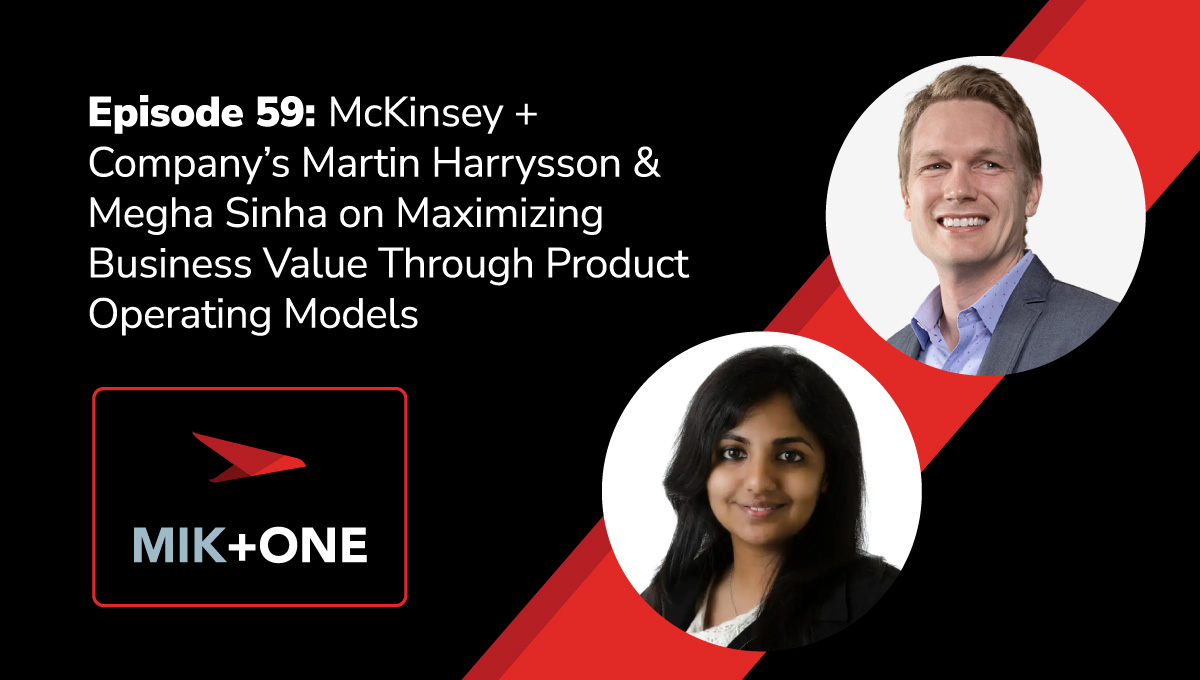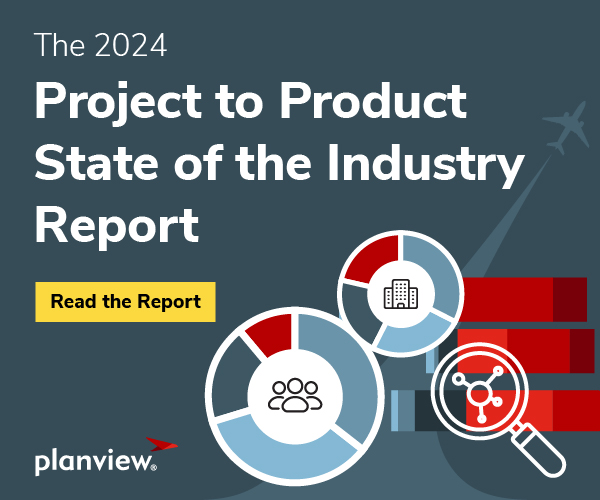
What if a simple shift in your business model could lead to a higher return for shareholders and a boost in operating margins?
There are significant benefits to shifting from traditional project-based approaches to a product-centric operating model. By adopting a product operating model, it can enhance profitability and efficiency for your organization.
In the latest episode of the Mik + One podcast, Dr. Mik Kersten, Chief Technology Officer at Planview, sat down with Martin and Megha from McKinsey & Company to discuss their groundbreaking research on the benefits of the product operating model.
Who is McKinsey & Company/Martin/Megha?
McKinsey & Company has been one of the leading consulting firms in the world for over nine decades. To put it simply, they help organizations solve complex problems and build for their future, providing clients with well-founded and analysis-backed recommendations addressing behavioral and functional problems across industries.
Megha Sinha is a partner in McKinsey’s Bay Area office. She leads software excellence and large-scale product and technology transformations focusing on engineering excellence, product, and platform operating models. Megha is a thought leader on developer productivity and brings learnings from leading software organizations to clients across industries.
Martin Harrysson is a senior partner located in the Bay Area. Martin partners closely with executives of primarily high-tech, software, and financial services companies to implement digitally enabled business models, improve product development, and get more out of their technology investments.
In addition to his hands-on advisory experience, Martin tracks developments in digital technology to derive practical insights for business leaders. He seeks to identify the business implications of digital and social media for C-suite executives and explores these topics in many of his publications.
Challenges and Implementation Strategies
Transitioning to a product operating model presents challenges, and we’ve outlined some of the key obstacles below.
Cross-functional collaboration
Aligning incentives and fostering collaboration across different functions within an organization is notoriously difficult. Ensuring all stakeholders are on the same page and working towards common goals requires thoughtful change management and leadership.
Organizational design
The need for robust organizational design is highlighted as a critical factor for the success of a product operating model. This involves rethinking structures and processes to support the new way of working.
Influence and buy-in
Achieving buy-in from all levels of the organization, particularly from senior leadership, is essential. Starting with small, demonstrable successes can help build momentum and showcase the value of the product operating model.
Clip Key Takeaways
- Quantified Benefits: High maturity in product operating models correlates with significantly better business outcomes.
- Comprehensive Research: The study covered 400+ public companies across various industries, highlighting the broad applicability of the findings.
- Key Metrics: “The two data points that I would highlight are that organizations in the top quartile of operating model maturity had 60% higher returns to shareholders and 16% higher operating margins than those in the bottom half,” Megha says.
- Customer Engagement: Companies with advanced product operating models experienced 38% higher customer engagement.
- Brand Awareness: These companies also enjoyed 37% higher brand awareness.
Podcast Key Takeaways
- Leadership Impact: Effective leadership and a strong organizational culture are crucial for successfully implementing product operating models.
- Transformational Leadership: Emphasizes inspiring vision, creativity, and innovation to enhance organizational effectiveness.
- Adapting to Technological Change: Creating an environment that supports rapid adaptation, innovation, and strategic use of technology is essential.
- Cross-functional Collaboration: Successful product operating models require seamless collaboration across various functions within an organization.
- Data-Driven Insights: Leveraging data to measure and improve business performance is a key aspect of mature product operating models.
Practical Advice for Leaders
For leaders looking to embark on this transformation, Martin and Megha offer practical advice. Starting with a thorough assessment of the current operating model to identify choke points and areas for improvement is crucial. From there, organizations should focus on targeted interventions that can deliver the most significant ROI.
Additionally, continuous learning and adaptation are essential for success. Organizations can gradually shift towards a more efficient and profitable product operating model by piloting changes in specific areas and scaling successes.
Changing the Future of Work
Whether you are a technology enthusiast, a business leader, or someone interested in the intersection of technology and business, the future of work and the strategic shifts necessary to thrive in the digital age are highlighted by this framework.
Martin and Megha share their insights from McKinsey’s extensive research, providing valuable guidance for organizations looking to drive business performance through strategic product management.
Want More?
Check out the Mik + One archives to listen to episodes with these and other experts. Be sure to subscribe to learn when new episodes are released.




